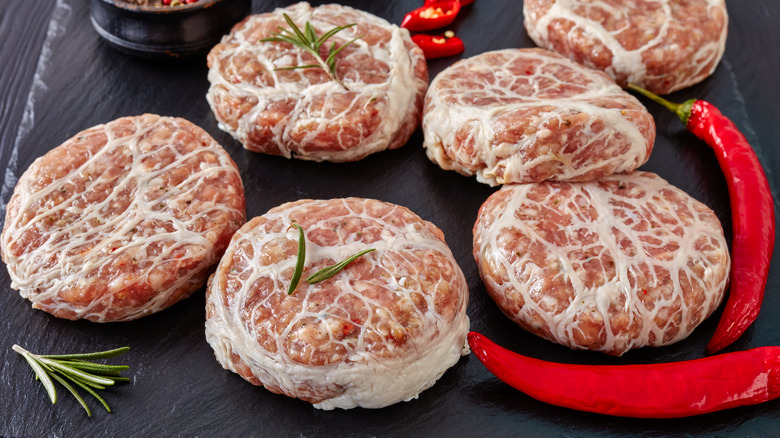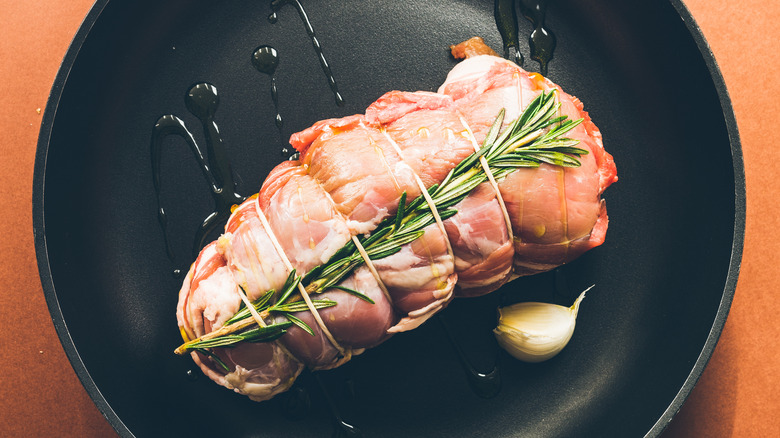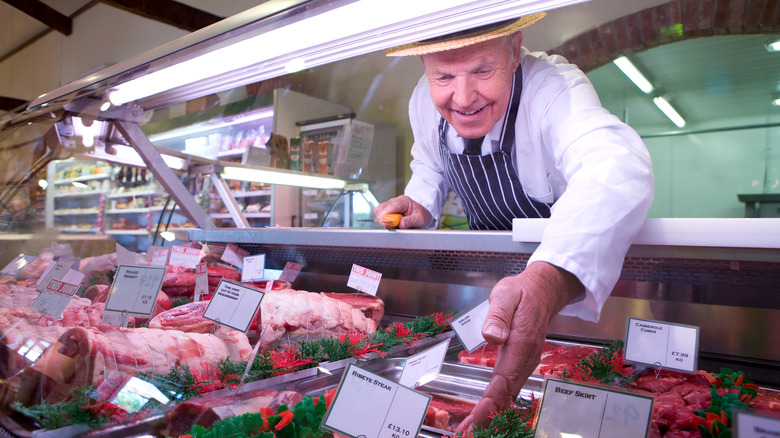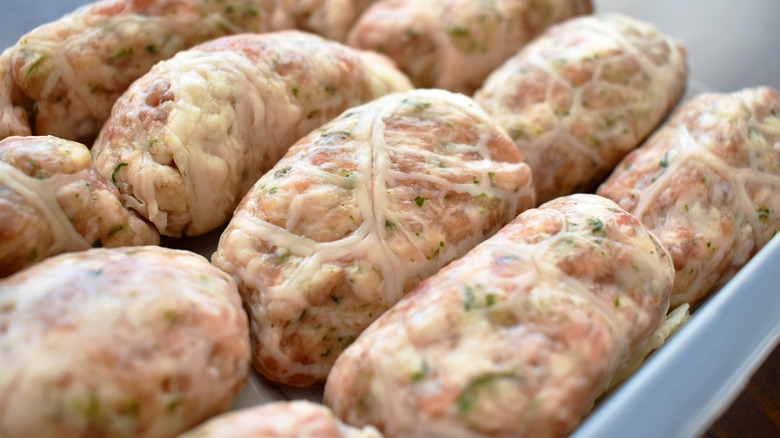What Is Caul Fat And How Do You Cook With It?
Have you ever heard of caul fat? It's an unappetizing name perhaps, but this type of fat is a secret weapon used by many chefs to bring flavor and moistness to meat dishes such as sausages and cured meats (via The Spruce Eats). An excellent example of nose-to-tail eating, caul fat — also known as lace fat, fat netting, or crépine in French — is the thin membrane that surrounds the digestive organs of animals including pigs, sheep, and cows.
Spread out, it indeed looks lacy, like a big web. Caul fat is typically used to wrap meaty foods, both to keep them intact while cooking and also to add moisture (via Food52). While the idea of using this fat might be a bit icky, cooking with caul fat at home is a great way to add some professional flair to your usual roster of dishes. Let's take a closer look at caul fat, where to get it, and what the heck to do with it.
How is caul fat used?
While caul fat is used all over the world, it's perhaps best known in French cooking, where it's used in rich pâtés and charcuterie (via Food52). Typically, caul fat is used to wrap cuts of meat that are at risk of drying out, such as a roast that's bound for the oven, or a French dish called crepinettes, which are essentially pork patties. As the caul fat renders, it bastes the meat it's wrapped around, while also helping to hold the item together as it cooks (via The Spruce Eats).
At home, caul fat is a great way to add some richness and luxury to meat dishes. You can wrap your standard meatloaf in caul fat before baking for an extra-juicy result, or ensure that a lean cut of meat, like pork loin, won't dry out in the oven by wrapping it in caul fat first. And of course you can make crepinettes, which is probably the dish most associated with caul fat. Per a recipe from Food52, crepinettes are basically little pork meatballs wrapped in caul fat before being seared in a hot pan.
Where to buy caul fat
Caul fat is not an everyday cooking item, and is typically used in professional, not home, kitchens. Still, it's likely that a good butcher shop that breaks down its own cuts of meat will have some caul fat, or will be able to order it for you (via The Spruce Eats). Caul fat might need to be processed before cooking. If what you get is a clean, white, lacy web of fat, the caul fat has already been cleaned and is good to go.
If, on the other hand, you receive pinkish fat with a strong odor, you will have to clean the caul fat before cooking. Rinse the fat in plenty of water to clean off the blood, then neutralize the smell by soaking the fat in a bowl of cold water with a glug of white vinegar or lemon juice. Rinse again, then pat the fat dry with a towel before cooking. Caul fat is also highly perishable and will only keep in the refrigerator for about three days. However, caul fat will last a bit longer in the freezer, usually for about six months.
What does caul fat taste like?
If reading about the lacy fat gathered from an animal's digestive organs makes you squeamish, never fear — caul fat actually has a very neutral taste (via The Spruce Eats). In fact, you've probably consumed some without even knowing it. If you're working with pork caul fat, which is usually the most readily available, it might taste a bit like bacon. But overall, caul fat is not used for its flavor, per se, but for its moisture-enhancing properties, bringing juiciness wherever it goes.
Forager Chef explains that items like game meat can get extremely dry while they're cooking. Wrapping it in caul prior to preparing the meat can actually work to insulate it. The caul will melt into the dish as it heats up and give it a subtle and delicious flavor. So, if you haven't yet tried it at home, make haste to your butcher today.



